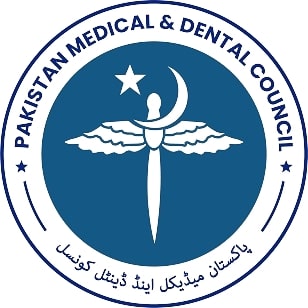PATTERN OF SELF-MEDICATION AMONG MBBS STUDENTS OF SHEIKH ZAYED MEDICAL COLLEGE, RAHIM YAR KHAN
DOI:
https://doi.org/10.59058/jaimc.v22i1.241Keywords:
Self-medication, medical students, prevalence, MBBS studentsAbstract
Background & Objective: Self-medication among medical students, particularly MBBS students, is a global concern due to its potential impact on future healthcare practices. The aim of this study was to evaluate the patterns of self-medication among MBBS students.
Methods: A cross-sectional study at Sheikh Zayed Medical College, Rahim Yar Khan, investigated the pattern of self-medication among MBBS students. All MBBS students participated in the data collection period, which ran from August 15 to September 15, 2023. A WhatsApp group was used to deliver an online questionnaire, which was completed by 130 individuals who met the inclusion criteria. The survey examined demographics, self-medication habits, motivations and sources of medicine. Statistical analysis was performed using SPSS version 25.
Results: Of the 130 participants, a considerable proportion 67 (51%) admitted to self-medicate for more than 2 symptoms with convenience cited as the main reason by the participants (46.15%). Headaches were the most frequently self-medicated condition (51.54%), while skin wounds had the lowest percentage of self- medication (10%). Moreover, a significant percentage of individuals (36.15%) reported modifying their pres- cription dose.
Conclusion: The high rate of self-medication among MBBS students highlights the importance of targeted measures to encourage future healthcare workers to use medications responsibly and to prioritize patient safety.
Downloads
Published
How to Cite
Issue
Section
License
Copyright (c) 2024 Hafiz Umer Farooq, Ghazala Yasmeen Iqbal, Nabeela Yasmeen, Rafay Ur Rehman Cheema, Shazia Sultan, Tariq Hussain

This work is licensed under a Creative Commons Attribution 4.0 International License.
The articles published in this journal come under creative commons licence Attribution 4.0 International (CC BY 4.0) which allows to copy and redistribute the material in any medium or format Adapt — remix, transform, and build upon the material for any purpose, even commercially under following terms.
-
Attribution — You must give appropriate credit, provide a link to the license, and indicate if changes were made. You may do so in any reasonable manner, but not in any way that suggests the licensor endorses you or your use.
- No additional restrictions — You may not apply legal terms or technological measures that legally restrict others from doing anything the license permits.
The editorial board of the Journal strives hard for the authenticity and accuracy of the material published in the Journal. However, findings and statements are views of the authors and do not necessarily represent views of the Editorial Board. Many software like (Google Maps, Google Earth, Biorender (free version)) restricts the free distribution of materials prepared using these softwares. Therefore, authors are strongly advised to check the license/copyright information of the software used to prepare maps/images. In case of publication of copyright material, the correction will be published in one of the subsequent issues of the Journal, and the authors will bear the printing cost.










